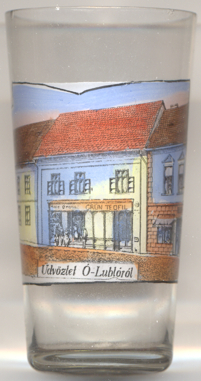

|
| SLOVENSKO | SLOVAKIA |
| Prešovský kraj | Prešov region |
| okres: Stará Ľubovňa |
 Stará Ľubovňa (in Hungarian: Ólubló, in German: Altlublau, in
Polish: Stara Lubowla) is situated at an elevataion of 545 m on the river Poprad east of the High
Tatra mountains, about 11 km south of the Polish border. the municipality has a population of about 16,300 (2019).
It is one of the oldest towns in the Spiš, an historic administrative county (comitatus) of the Kingdom of Hungary,
and is today the administrative capital of the district of Stará Ľubovňa in the Prešov region
of northeastern Slovakia.
Stará Ľubovňa (in Hungarian: Ólubló, in German: Altlublau, in
Polish: Stara Lubowla) is situated at an elevataion of 545 m on the river Poprad east of the High
Tatra mountains, about 11 km south of the Polish border. the municipality has a population of about 16,300 (2019).
It is one of the oldest towns in the Spiš, an historic administrative county (comitatus) of the Kingdom of Hungary,
and is today the administrative capital of the district of Stará Ľubovňa in the Prešov region
of northeastern Slovakia.
In 1292 the village was first mentioned as Libenow. Until it became a free royal town in 1364 the town fell under the jurisdiction of the castle. In 1412 it belonged to the 16 Spiš towns given by the Sigismund of Luxembourg, King of Hungary, as a deposit to King Władysław II of Poland. The pledge was part of the Treaty of Lubowla (Stará Ľubovňa) and was thought to be only for a short time, but it finally lasted for 360 years. Only in the course of the first Partition of Poland in 1772 (see map) during the reign of Maria Theresia of Austria the territory came back to the Kingdom of Hungary. The pledge was actually an advantage for the towns concerned because they did not have to submit themselves to the comitatus or nobility and had a neutral position in turmoils between Poland and Hungary.
Glass no. 3698 [left] is labeled in Hungarian Üdvözlet Ó-Lubló, i.e. 'Greetings from Stará Ľubovňa'.
 The business sign on the shop depicted in the centre of the picture bears the inscription GRÜN TEOFIL,
the name of the owner. Teofil Grün was a wholesaler in Ólubló / Stará
Ľubovňa.
The business sign on the shop depicted in the centre of the picture bears the inscription GRÜN TEOFIL,
the name of the owner. Teofil Grün was a wholesaler in Ólubló / Stará
Ľubovňa.
[https://de.wikipedia.org/wiki/Stará_Ľubovňa;
https://www.google.com/url?sa=t&rct=j&q=&esrc=s&source=web&cd=13&ved=2ahUKEwi3iq_mk7TkAhVQb1AKHTSqBoIQFjAMegQIARAC&url=https%3A%2F%2Fcollections.ushmm.org%2Ffindingaids%2FRG-39.019M_01_fnd_hu.pdf&usg=AOvVaw17M9PqVLbOlaW3uWnaU_4n]
![[scale]](lineal.jpg)